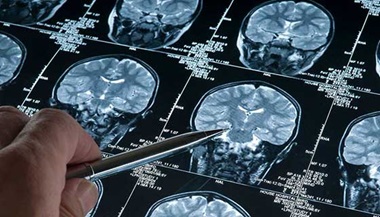Innovative Care for Brain Cancers in the Greater Washington Area
Hearing that you have been diagnosed with a brain tumor is a life-changing moment, especially if it’s potentially cancerous. People who have gone through this situation will tell you that questions and worries start streaming through their minds.
These cancers can be challenging because tumors in the brain or nervous system can be difficult to access and are often located in regions that control functions such as speech or hearing.
Brain Cancer Diagnosis: Multidisciplinary Approach in Washington, D.C., Area
The Johns Hopkins Kimmel Cancer Center has one of the nation’s most robust neuro-oncology programs, designed to treat brain cancers. This program is now part of the center in the Washington, D.C., region, which includes Sibley Memorial Hospital and Suburban Hospital.
When patients are diagnosed with brain cancer, “we hope they will come to us,” says medical oncologist Solmaz Sahebjam, director of the recently established neuro-oncology program at the Johns Hopkins Kimmel Cancer Center at Sibley Memorial Hospital.
“We are here to give patients and their families hope,” says Sahebjam, “as well as the confidence in knowing they’re trusting their care to a multidisciplinary team of experts who are dedicated to providing individualized treatment that addresses the cancer but also the patient’s quality-of-life goals.”
Neurosurgeon Youssef Comair and radiation oncologist Carmen Kut are leading the efforts with Sahebjam to provide individualized and innovative care for brain cancer patients in the Greater Washington area. This program is designed to give patients diagnosed with brain cancers access to a team of experts in surgery, radiation oncology, medical oncology and more. These experts work with patients to assess their diagnosis, overall health and quality of life goals, and create a treatment plan that targets the cancer but also approaches the patient holistically.
We're here to give patients and their families hope."
Solmaz Sahebjam
A Team Approach
A team approach to brain cancers is critical. Other experts, such as speech and language pathologists, oncology pharmacists, physical therapists, social workers and nutritionists, can be brought in to ensure coordinated care. Dedicated nurse navigators also provide patients with a central point person who can help with coordination.
The brain cancer program at the Johns Hopkins Kimmel Cancer Center at Sibley Memorial Hospital is already providing patients from across the nation and around the world with advanced treatment options for their cancer. This includes the Johns Hopkins Proton Therapy Center, which uses radiation therapy to pinpoint tumors in the brain while sparing critical structures such as the eyes, optic nerves and brainstem. Additional options such as awake surgery and clinical trials are also available.
Surgery and Pathology
With decades of experience, Comair is internationally recognized for pioneering the technique of operating on patients while they are awake. This approach helps preserve speech and motor functions.
Cancerous tissue removed during surgery can now be analyzed with increasing sophistication. “We rely on whole-genome sequencing and several molecular markers to classify all tumors, even benign ones, to understand if and how they might recur,” Comair says. When those pathology results are available, they are discussed among the cancer center’s multidisciplinary team, which includes radiology, pathology, oncology, neurosurgery and other specialties as needed.
Radiation and Chemotherapy
Radiation and/or chemotherapy are also used in brain cancer treatments. Sometimes, these modalities are offered as standalone treatment. If recommended after surgery, radiation and/or chemotherapy typically begin about four to six weeks after surgery.
As Kut explains, radiation treatment for the brain includes photon and proton radiotherapies. The precision available from both photon and proton radiotherapies enables the specialists to target cancer cells with less damage to surrounding healthy tissue.
Photon therapy, Kut says, works by aiming X-ray beams at abnormal tissues through the skin from multiple directions. Photon therapy includes 3D conformal radiotherapy, intensity-modulated radiation therapy and stereotactic radiosurgery, which utilize precisely focused radiation beams to treat tumors in the brain, spine and other parts of the body.
Proton therapy, available in Greater Washington since 2019, is an advanced and highly precise radiation treatment. Here, Kut says, advanced proton pencil beam technology is used to target tumors with cancer cell-killing proton energy, layer by layer.
With advanced technology, these proton beams can be manipulated to provide precise radiation therapy for patients so that there is no exit radiation dose. In certain clinical scenarios, proton therapy can help to limit radiation dose and protect critical structures such as the eyes, optic nerves and brainstem.
Kut says the decision about which type of radiation to use depends on many factors, including the size and location of the tumor and prior exposure to radiation treatments.
Patients who get a combined radiation and chemotherapy protocol generally have a month to recover before continuing with the same chemotherapy, usually for an additional six months, says Sahebjam. Following treatment, patients are monitored with MRIs every few months.
Our Neuro-Oncology Program

Learn more about our brain tumor program at the Johns Hopkins Kimmel Cancer Center in the Greater Washington area.






